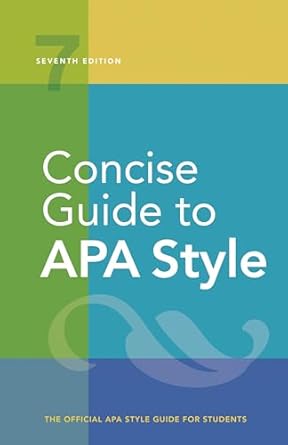[toc]
referencing tables figures a guide for academic writing
Concise Guide to APA Style: 7th Edition (OFFICIAL)
Page 158 Review
The Art of Referencing Tables and Figures in Academic Writing: A Detailed Analysis
This ebook excerpt provides a comprehensive guide on how to effectively incorporate tables and figures into academic writing.
It covers essential aspects such as file formats, referencing conventions, and placement options.
Let’s delve deeper into the key takeaways from this section.
Acceptable File Formats for Images
The excerpt begins by addressing the acceptable file formats for images used in classroom assignments. “File formats such as JPG, PNG, TIFF, and EPS are acceptable for classroom assignments.” This is crucial information for students and researchers alike, as using the appropriate format ensures clarity and compatibility.
It also acknowledges that “some types of figures require higher resolution than others; for example, line art requires finer detail than a photograph.
Ensure that the format used supports the resolution needed for clear presentation of the image.”
Referencing Tables and Figures: The Callout System
One of the most important aspects covered is the method of referencing tables and figures within the text.
The excerpt emphasizes the importance of using a “callout” system. “In the text, refer to every table and figure by its number—known as a callout.” It also highlights the need to provide context. “When you call out a table or figure, also tell readers what to look for in that table or figure.”
Examples of effective callouts are provided:
* “As shown in Table 1, the demographic characteristics . . .”
* “Figure 2 shows the model .. .”
* “… of the results of the testing (see Table 3).”
* “… of the comparisons (see Figures 4 and 7).”
The excerpt explicitly advises against using vague references like “the table above” or “the figure on page 32.” “Do not write “the table above” (or “below’) or “the figure on page 32.” Page numbers often shift during the writing process, which can lead to errors.
Referring to tables and figures by number rather than by location on the page also helps readers who access a work using assistive technologies such as screen readers.”
Placement Options for Tables and Figures
The excerpt outlines two primary options for placing tables and figures within a paper. “There are two options for the placement of tables and figures in a paper.
The first option is to place all tables and figures on separate pages after the reference list (with each table on a separate page followed by each figure on a separate page).
The second option is to embed each table and figure within the text after its first callout.”
The text clarifies that either option is acceptable unless the instructor specifies a preference. “Your instructor may specify which option to use; either approach is acceptable if your instructor does not specify.”
Formatting and Spacing Guidelines
Further emphasis is placed on consistent formatting. “Align all tables and figures with the left margin regardless of where they appear in the paper.
When embedding a table or figure within the text, position it after a full paragraph, ideally the paragraph where it is first called out.
Place the table or figure so that it fits on one page if possible (see Section 7.18 for tables that are longer or wider than a page).
If text appears on the same page as a table or figure, add a double-spaced blank line between the text and the table or figure so that the separation between the text and table or figure is easier to see.
Put a short table or small figure at the beginning or end of a page rather than in the middle.”
Conclusion
In conclusion, this ebook excerpt provides valuable guidance on effectively integrating tables and figures into academic papers.
By adhering to the principles outlined – choosing appropriate file formats, using clear callouts, selecting suitable placement options, and maintaining consistent formatting – writers can enhance the clarity and impact of their work.
Buy full ebook for only $18: https://www.lulu.com/shop/american-psychological-association/concise-guide-to-apa-style-7th-edition-official/ebook/product-rmzpq54.html?page=1&pageSize=4
Referencing Tables Figures A Guide For Academic Writing
Read more: Mastering Abbreviations: APA Style Guide


Leave a Reply